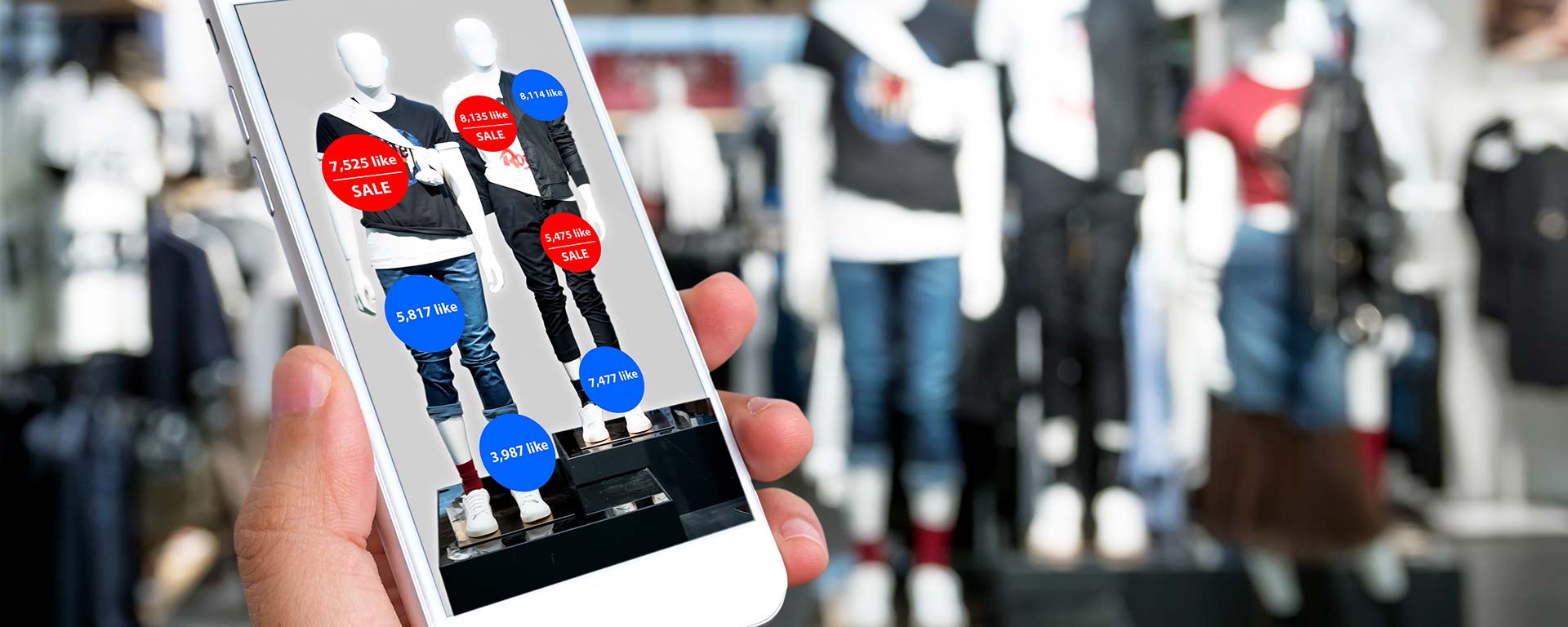
The Future Of Omnichannel Marketing
Imagine you walk into your grocery store, and instead of grabbing a cart, you put on augmented reality (AR) glasses pre-loaded with an artificial intelligence shopping program. Wait, did I say walk into a store? I meant to sit down on your couch at home, put on your VR headset, and virtually shop from the comfort of your own home. A virtual shelf fills with a curated selection based on your past purchase history. Throughout the “trip,” you pick up and inspect products, try things on, ask the program questions about product ingredients, and check product reviews.Once the plotline for science fiction films, experiences like this one are fast becoming realities. The first-generation examples of this technology are already here. Smartphone apps are enabling consumers to access additional information as they walk along the aisles, to view how a product looks in their home, or provide a guided path through a store. We expect growth in this technology to accelerate, based on consumers’ willingness to adopt this type of immersive, interactive technology experience that blends online and offline. And according to our research, AR or virtual reality (VR) technology has the highest potential to be the next big disruptor and differentiator.
Over half of global consumers (51%) are already willing to use A/VR technology to assess products, reflecting a high level of interest in adopting this emerging technology. By comparison, only 44% of consumers say they are willing to use a self-service checkout, a much more ubiquitous technology. While consumers are similarly interested in driverless cars, drone delivery, custom 3D printed products, and receiving personalized health advice from artificial intelligence, we believe A/VR will face the least regulatory, logistical, and ethical headwinds.
TRY-BEFORE-YOU BUY WILL BRIDGE PHYSICAL AND DIGITAL
So far, the implementation of A/VR in stores has been more gimmicky than practical. However, as access and adoption increases, it has the potential to bridge the gap between store and home, online and offline. By combining personal datasets with artificial intelligence and machine learning, retailers and manufacturers will have the power to deliver a personalized experience, unlike anything we’ve seen before. The pain of scouring the shelf for your favorite product, trying to figure out if a product fits in your home, on your desk, or you, and other everyday shopper struggles will all but disappear.
This doesn’t mean that there won’t still be an audience for the corner store or traditional trade kiosk, only that A/VR will usher in a new kind of store and brand experience and an unprecedented level of personalization.
In-store augmentation technology such as navigation apps and electronic shelf beacons will create captivating and individualized experiences for consumers who prefer a ramped-up physical retail experience, based on their data profiles. Smartphones, AR apps, and smart glasses will provide a custom store experience for each individual, which could include personalized advertising, content, and product recommendations, all aimed at helping consumers make smarter, more informed decisions.
Brands will also be able to use interactive apps and virtual assistants to provide personalized experiences for customers, expanding their reach, and earning brand loyalty. This will likely disrupt the traditional trade promotion relationship between retailers and manufacturers, as manufacturers promote directly to their customers at scale and for a lower cost.
However, both brands and retailers will be able to use artificial intelligence to understand better how their marketing investments influence sales outcomes. This will then enable them to optimize and individualize future campaigns.
LIKE ALL EMERGING TECH, AR & VR REQUIRE CAUTION AND DILIGENCE
But while A/VR technology opens up doors for companies to interact, engage, and share information with consumers, it also comes with certain risks. The advanced application of data for personalization amplifies any misstep and will require the utmost precision, security, and respect for the data and how it’s used.
To succeed, companies must accelerate their ability to protect, manage, and connect their data sets as well as consumers’ data. By taking proactive measures, companies can avoid spending excessive amounts of money fixing problems or even damaging their brand reputation.
In the next five years, A/VR technology will augment the shopping journey in increasingly meaningful ways-from the way consumers discover, choose, share, buy, and engage with brands. When connected with product data, this technology will reduce the premium on shelf space by enabling consumers to quickly sort, navigate to, and identify products as they might online-by ratings or attributes. In-store merchandising and promotions will become increasingly personalized and sophisticated, matching specific deals with the shopper’s behaviors. Furthermore, A/VR will tear down the delineation between online and offline offerings, enabling consumers to easily see and access extended product offerings in-store.
For the brands, retailers, and advertisers that adopt A/VR technology quickly, the opportunity to reach consumers where they are will be unprecedented. And once they’ve taken the necessary steps to protect consumer data, they’ll be able to create informative, personalized, and compelling experiences that enable risk-free ‘try-before-you-buy’ scenarios and smarter decision making for consumers.
A Repost From Nielsen Global Connect®
SHARE ARTICLE
Your Brand, Elevated.
Be The Brand Everyone Talks About.
The Next Big Win Starts Here.